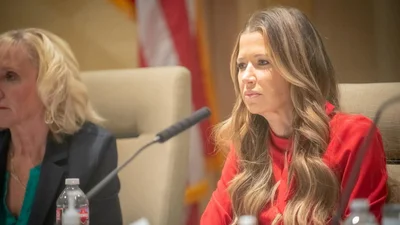New Mexico educators thought many of the state’s students were not being fairly assessed under the Partnership for Assessment of Readiness for College and Careers (PARCC) program.
So, the state pushed to devise an alternate educational assessment program in 2019.
Although COVID-19 slowed its implementation, students participated in Measures of Student Success and Achievement (MSSA) testing in the spring. The New Mexico Public Education Department released the results on Thursday, publicizing a baseline of scores that will allow the state to gauge and improve student success moving forward.
One thing that sets the MSSA apart from the PARCC is that it is more “culturally and linguistically attuned” to a larger percentage of New Mexico students, state Education Secretary Kurt Steinhaus said during a release of the data.
Because the nature of the MSSA test is different from the PARCC, it is difficult to compare the 2022 results to the last PARCC test that was given in 2019. The new system tests fewer grade levels on a four-tiered rating system, compared to the five-tiered PARCC ratings, and contains fewer open-ended tasks.
Steinhaus said the new model will allow educators to better tailor changes to fit the needs of the students as the state works to make sure every child receives a chance to succeed.
“It doesn’t matter who you are, what your circumstance is – every single child in New Mexico can achieve at high levels,” Steinhaus said. “We just have to figure out a way to meet them where they’re at and relate the learning to their lives and we can help them achieve.”
That’s the premise for the cultural competence approach the school system wants to incorporate.
“Cultural competence and culturally relevant curriculum means the values of that particular community [are] being integrated or woven into that school,” Steinhaus said. He cited a recent visit to a ranching community and said cultural competence means giving children examples in the learning process that they can relate to things they are doing outside of school.
Overall, the test results show that non-native English speakers and economically marginalized children struggled to achieve proficient or advanced scores (the two highest ratings). Steinhaus said that the state is bringing in more teachers who speak various languages to better convey the material.
While the numbers might not be what parents want to see yet, Steinhaus said the state will be able to build on the numbers as officials analyze future test scores and find out what works best for more students.
The data from the first year of the new assessment “shows some real bright spots in areas where kids who are in really tough situations are achieving at high levels,” he said. “And we want to learn from those examples … and share those examples with all the other teachers in New Mexico.”
Some criticized the shift to a new test and said it would let the state mask underachievement. Steinhaus said the state is stressing transparency through the process. That includes using a parent portal so parents can see test results and trends.
Steinhaus was asked what he would tell parents when they are frustrated with what they view as a lack of academic success. He pointed to recent changes the state has made, including training teachers on the science of reading. This program is modeled after what Mississippi did to improve its scores. It took a few years to reap the benefits, but emphasizing and encouraging reading is key, Steinhaus said. Current political leaders backed that program, and the state is working with teachers year by year to help them better teach reading.









